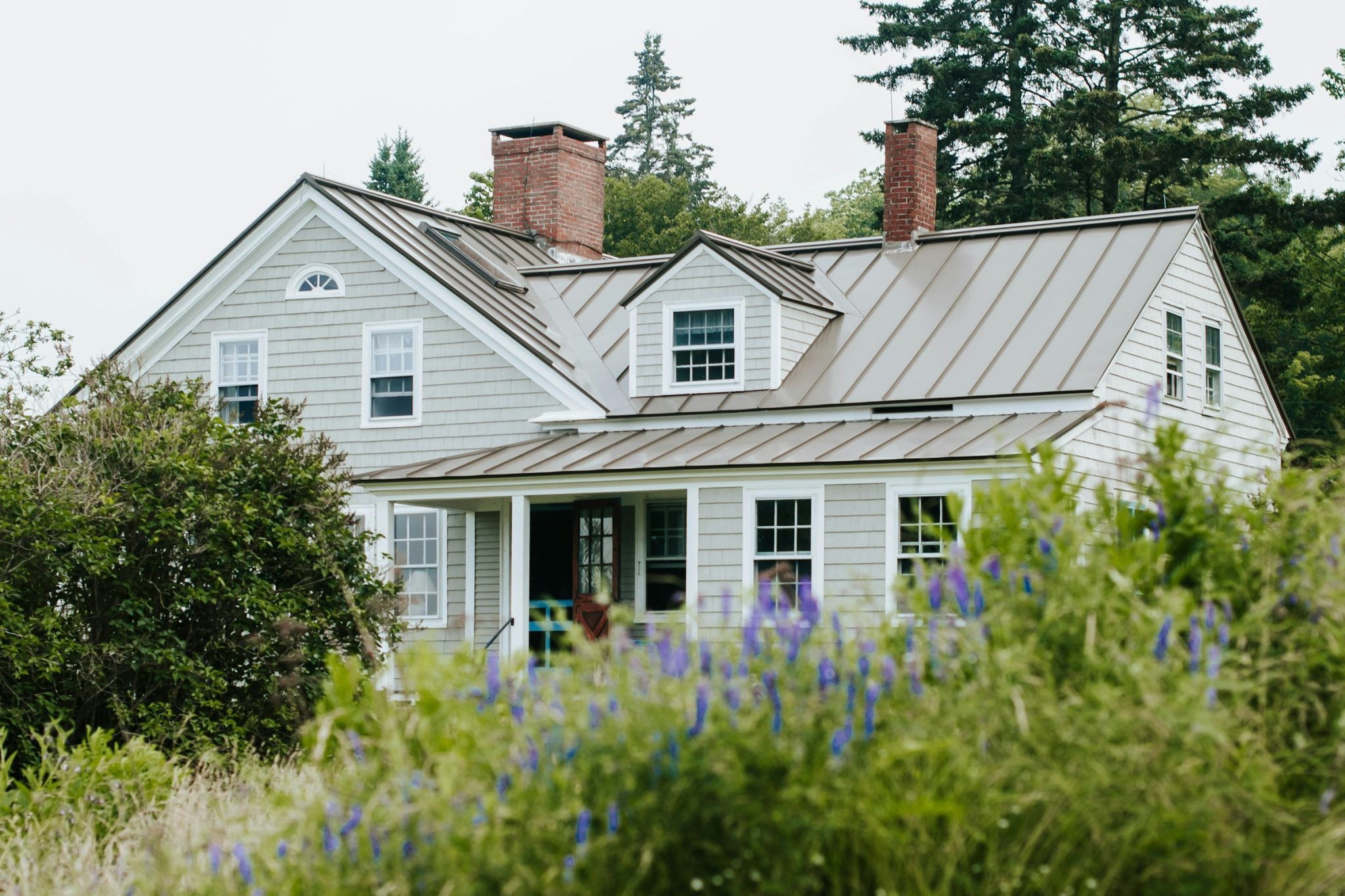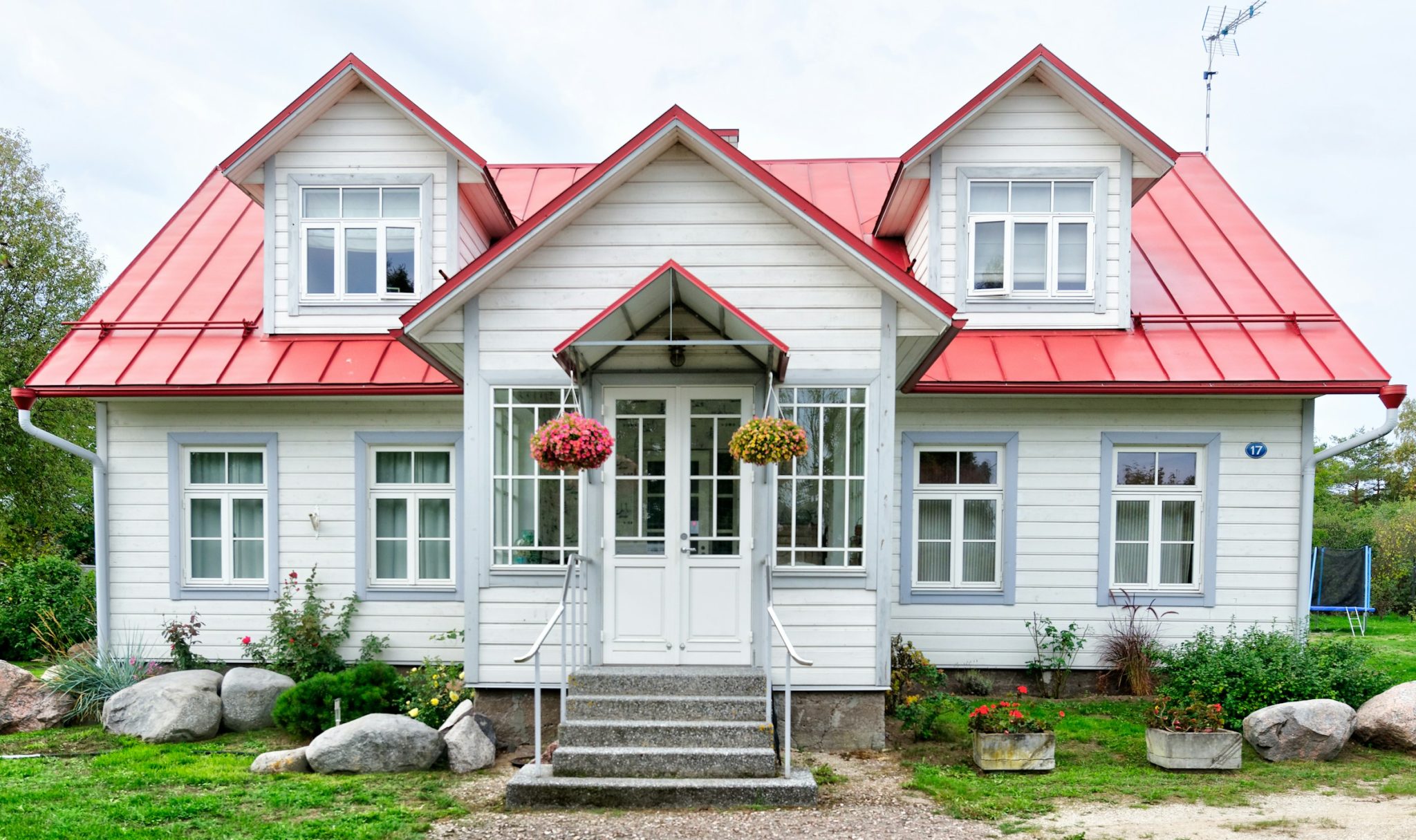With sustainability becoming increasingly important in construction and home improvement, many homeowners and businesses are turning to eco-friendly roofing options. One such option gaining popularity is metal roofing. In this blog, we’ll explore the eco-friendly practices associated with metal roofs and why they are a smart choice for environmentally-conscious individuals.

Table of Contents
Benefits of Metal Roofs
Metal roofs are an appealing choice for eco-conscious consumers for various reasons. An investment in metal roofing offers numerous benefits for homeowners and businesses alike. Firstly, metal roofs are renowned for their exceptional durability and longevity, making them a wise long-term investment. Unlike traditional roofing materials such as asphalt shingles, which may need to be replaced every few decades, metal roofs can last 50 years or more with minimal maintenance. This longevity not only reduces the need for frequent repairs and replacements but also provides peace of mind knowing that the roof will withstand the test of time, making it a cost-effective choice in the long run. Additionally, metal roofs are highly resistant to fire, rot, and pests, further enhancing their durability and longevity.
Furthermore, metal roofs offer significant energy-saving benefits, making them an environmentally-friendly and cost-efficient option. The reflective surfaces of metal roofs help to reduce heat absorption, keeping buildings cooler in the summer months and reducing the need for air conditioning. This improved energy efficiency not only lowers utility bills but also reduces the carbon footprint associated with energy consumption, making metal roofing a sustainable choice for eco-conscious consumers. By investing in metal roofing, homeowners and businesses can enjoy lower energy costs, increased comfort, and reduced environmental impact, making it a smart and environmentally-responsible investment for the future.
Eco-Friendly Practices in Metal Roofing
One of the key eco-friendly practices associated with metal roofing is the use of recycled materials in their production. Many metal roofing manufacturers utilize recycled steel or aluminum, diverting waste from landfills and reducing the demand for virgin materials. Furthermore, metal roofs are 100% recyclable at the end of their lifespan, making them a sustainable choice for environmentally-conscious consumers. Another eco-friendly aspect of metal roofs is their ability to facilitate rainwater harvesting and collection. Metal roofs are non-porous, allowing rainwater to run off cleanly into gutters and downspouts. This collected rainwater can then be used for irrigation, reducing the need for potable water and conserving valuable resources.
Installation and Disposal Considerations
Proper installation techniques are crucial for maximizing the environmental benefits of metal roofs. By ensuring a tight fit and adequate sealing, installers can prevent air leakage and heat loss, improving the energy efficiency of the building. Additionally, proper disposal methods for old metal roofing materials are essential to minimize environmental impact. Fortunately, metal roofs are relatively easy to recycle, with many scrap metal recycling facilities accepting them for processing. Recycling old metal roofing materials not only diverts waste from landfills but also conserves energy and reduces greenhouse gas emissions associated with metal production.
Cost Considerations and Incentives
While the initial cost of metal roofing may be higher than traditional roofing materials, it’s important to consider the long-term savings and environmental benefits. Metal roofs require minimal maintenance and have a longer lifespan than asphalt shingles, resulting in lower lifetime costs. Additionally, many governments and utilities offer tax credits, rebates, and other incentives for installing eco-friendly roofing materials. These incentives can help offset the initial cost of metal roofing and make it a more financially attractive option for homeowners and businesses.
Maintenance and Care Tips
To maximize the lifespan and eco-friendly benefits of metal roofing, regular maintenance is essential. Homeowners should inspect their roofs annually for signs of damage or corrosion and address any issues promptly to prevent further deterioration. Cleaning debris from gutters and ensuring proper drainage can also help prevent water damage and prolong the life of the roof. By following these maintenance tips, homeowners can ensure their metal roofs remain in optimal condition and continue to provide sustainable benefits for years to come.
Case Studies and Success Stories
Numerous homeowners and businesses have embraced metal roofing and experienced the environmental and financial benefits firsthand. For example, a homeowner in California installed a metal roof and saw a significant reduction in their energy bills due to improved insulation and reduced heat absorption. Similarly, a commercial building owner in Texas replaced their asphalt shingle roof with metal roofing and received tax credits for their eco-friendly upgrade. These success stories serve as inspiration for others considering metal roofing and demonstrate the tangible benefits of sustainable construction practices.

Metal roofing offers a multitude of eco-friendly advantages, from recycled materials and energy efficiency to rainwater harvesting and recyclability. By choosing metal roofing, homeowners and businesses can reduce their environmental footprint, conserve resources, and save money on energy bills. With proper installation, maintenance, and disposal practices, metal roofs can provide sustainable benefits for generations to come. As the demand for eco-friendly building materials continues to grow, metal roofing stands out as a reliable and environmentally responsible choice for today’s conscientious consumers.
- About the Author
- Latest Posts
Whether she is researching the latest trends in home decor, life-changing destination getaways, or the best way to maintain your finances, Dewey takes pride in leaving no stone unturned. She is passionate about distilling and delivering high-quality information that you can use to upgrade your life.

